
Roots
Consider for a moment the profound connection between our strands and the very earth that sustained early human existence. Before the advent of synthetic compounds or the complex formulations of modern laboratories, the materials safeguarding our hair were as elemental as the soil beneath our feet, the plants that flourished around us, and the creatures sharing our landscapes. This primal understanding of protection, born from observation and necessity, forms the very foundation of historical hair care. It is a story not just of what was used, but of a quiet, enduring wisdom passed through generations, shaping our relationship with our natural crowning glory.
The earliest efforts to preserve hair’s vitality stemmed from an intuitive recognition of its vulnerability to environmental forces. Sun, wind, dust, and even the rigors of daily activities demanded a shield. Our ancestors, keenly attuned to their surroundings, turned to what was readily available, transforming raw substances into protective balms and coverings. These materials, simple in their origin, possessed a surprising efficacy, laying the groundwork for practices that persisted for centuries, some even echoing in contemporary routines.
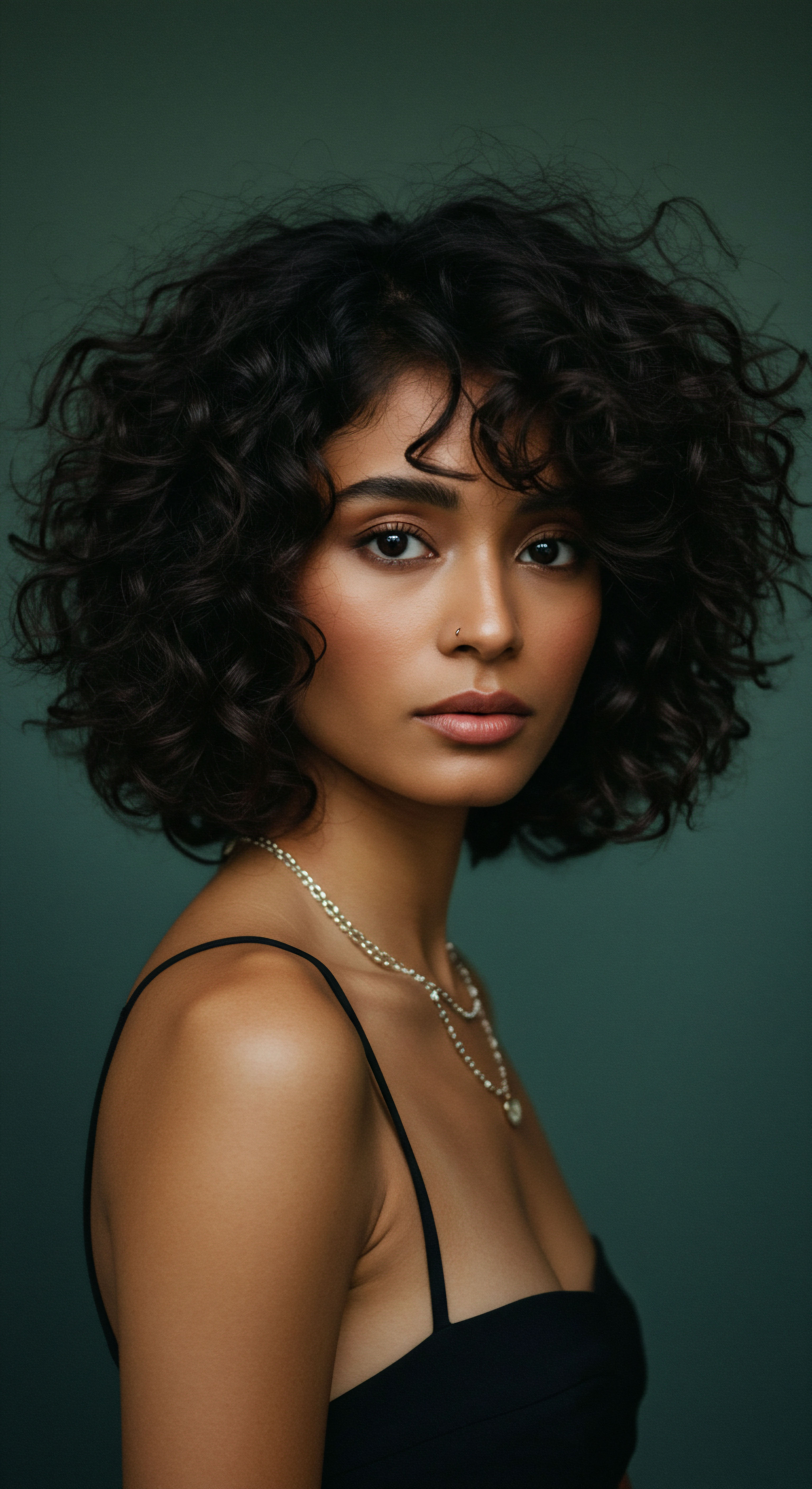
From Earth’s Bounty
A significant portion of early hair protection came directly from the geological and botanical realms. Clays and certain mineral earths, for instance, found application not only for cleansing but also for creating a physical barrier. Their fine particulate structure could coat hair shafts, offering a degree of protection against environmental pollutants and harsh sun. In many ancient societies, particular hues of earth, like red ochre, held cultural significance beyond mere utility, imbuing hair with symbolic meaning while simultaneously shielding it.
Plant life, a boundless source of sustenance and medicine, also provided a spectrum of protective agents. Plant Oils, rendered from seeds, nuts, and fruits, served as the primary conditioners and sealants. Think of shea butter from the karité tree, rich in fatty acids and vitamins, or coconut oil, a staple across tropical regions, known for its ability to penetrate the hair shaft and reduce protein loss.
Resins, the sticky exudates of certain trees, occasionally served to bind and hold hair, forming a natural, if rigid, protective layer. The sap of various trees, when dried or processed, sometimes lent itself to creating a stiffened structure, safeguarding intricate styles.
The earliest materials for hair protection were often simple, readily available elements from the natural world, reflecting a deep, intuitive connection to the environment.
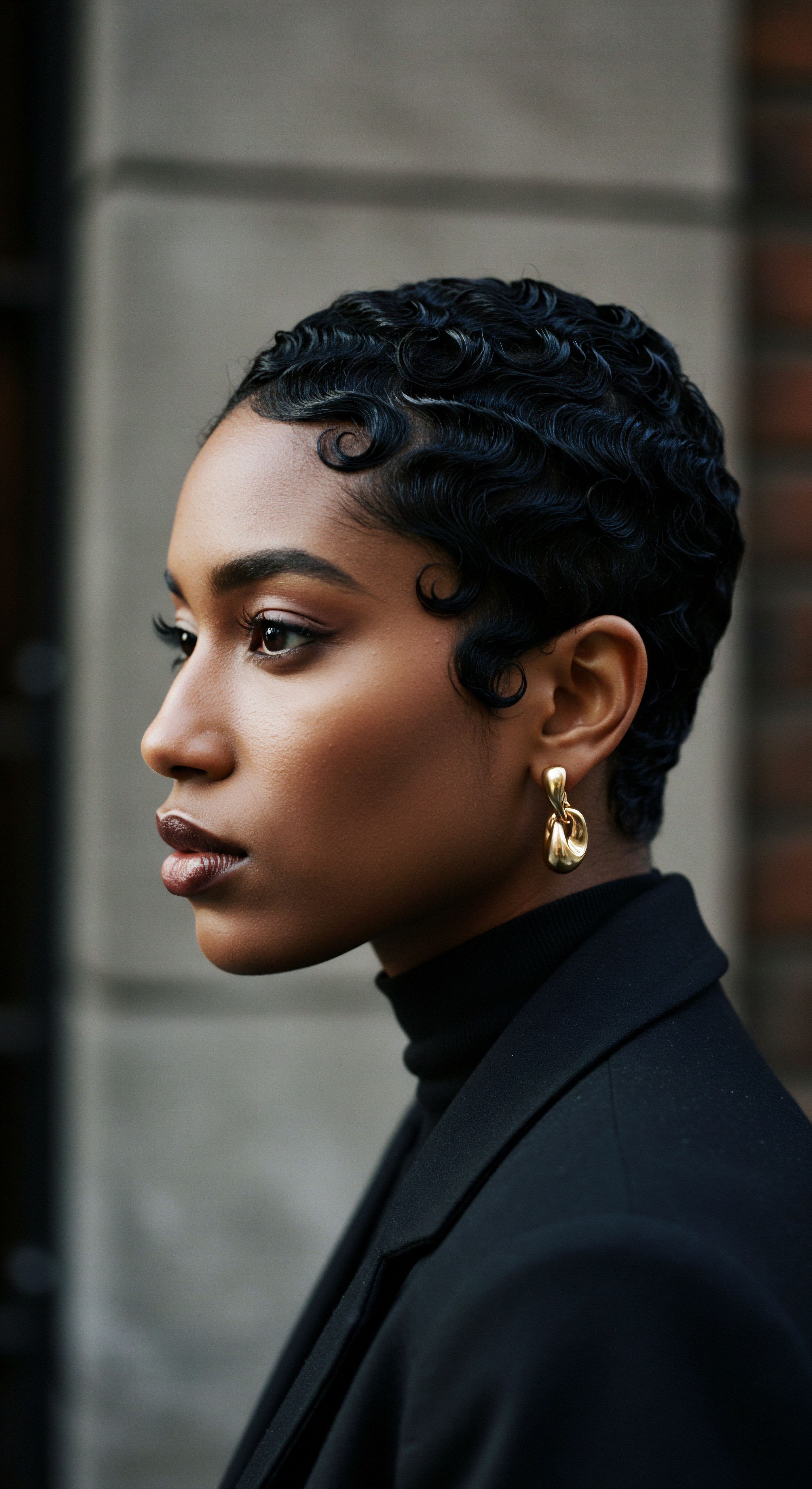
Animal Contributions
The animal kingdom, too, offered its share of protective materials. Animal fats and greases, collected from various creatures, served as emollients, providing a barrier against moisture loss and external damage. These were particularly vital in colder climates or arid regions where hair could quickly become brittle. Lanolin, derived from sheep’s wool, represents a prime example of a naturally occurring lipid that could coat and condition hair.
Beyond topical applications, the physical presence of animal hides and fibers provided a tangible shield. Early head coverings, crafted from softened animal skins or spun animal fibers like Wool, offered insulation against cold and sun, preventing direct exposure. The practice of incorporating animal hair or even entire pelts into hairstyles or headwear served a dual purpose ❉ adornment and a robust defense against the elements.
| Material Category Botanical Oils & Butters |
| Specific Examples Shea butter, Coconut oil, Olive oil, Argan oil |
| Primary Protective Action Moisture retention, cuticle sealing, UV defense |
| Material Category Clays & Earths |
| Specific Examples Red ochre, Bentonite clay, Kaolin clay |
| Primary Protective Action Physical barrier, cleansing, mineral fortification |
| Material Category Animal Fats & Fibers |
| Specific Examples Lanolin, various animal greases, wool, leather |
| Primary Protective Action Emollient barrier, insulation, physical shielding |
| Material Category Natural Fibers |
| Specific Examples Cotton, Linen, Silk (later periods) |
| Primary Protective Action Physical barrier, reduced friction, breathability |
| Material Category These foundational materials formed the initial protective arsenal for hair across diverse cultures. |
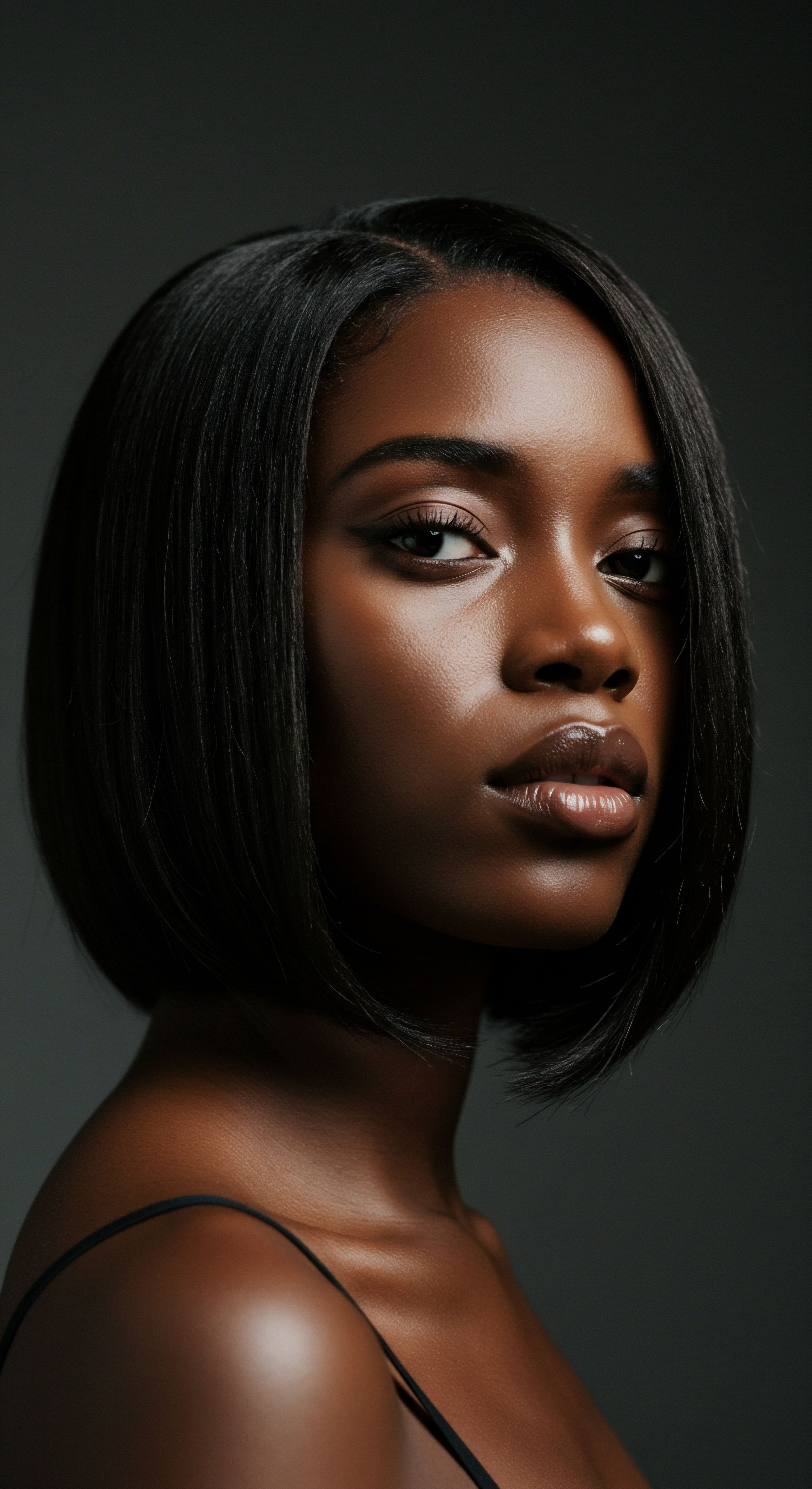
What Did Early Protective Coverings Offer?
The simplest, yet perhaps most universally applied, form of hair protection came through physical coverings. These ranged from leaves and rudimentary animal skins in prehistoric times to more sophisticated textiles as societies developed. Headwraps, turbans, and caps served not only as cultural markers or expressions of status but as indispensable tools for preserving hair. They shielded strands from dust, debris, and the sun’s relentless rays, minimizing damage from external aggressors.
Such coverings also helped to retain natural oils and moisture, particularly in dry climates, preventing excessive dehydration. The constant rubbing against clothing or harsh environments could lead to breakage, and a soft, protective layer around the hair offered a quiet respite.
The selection of these early materials speaks volumes about human ingenuity and adaptability. They represent a deep understanding of natural properties, long before scientific principles were codified. This foundational knowledge, born of observation and experimentation, set the stage for more complex hair care rituals that would develop over millennia.
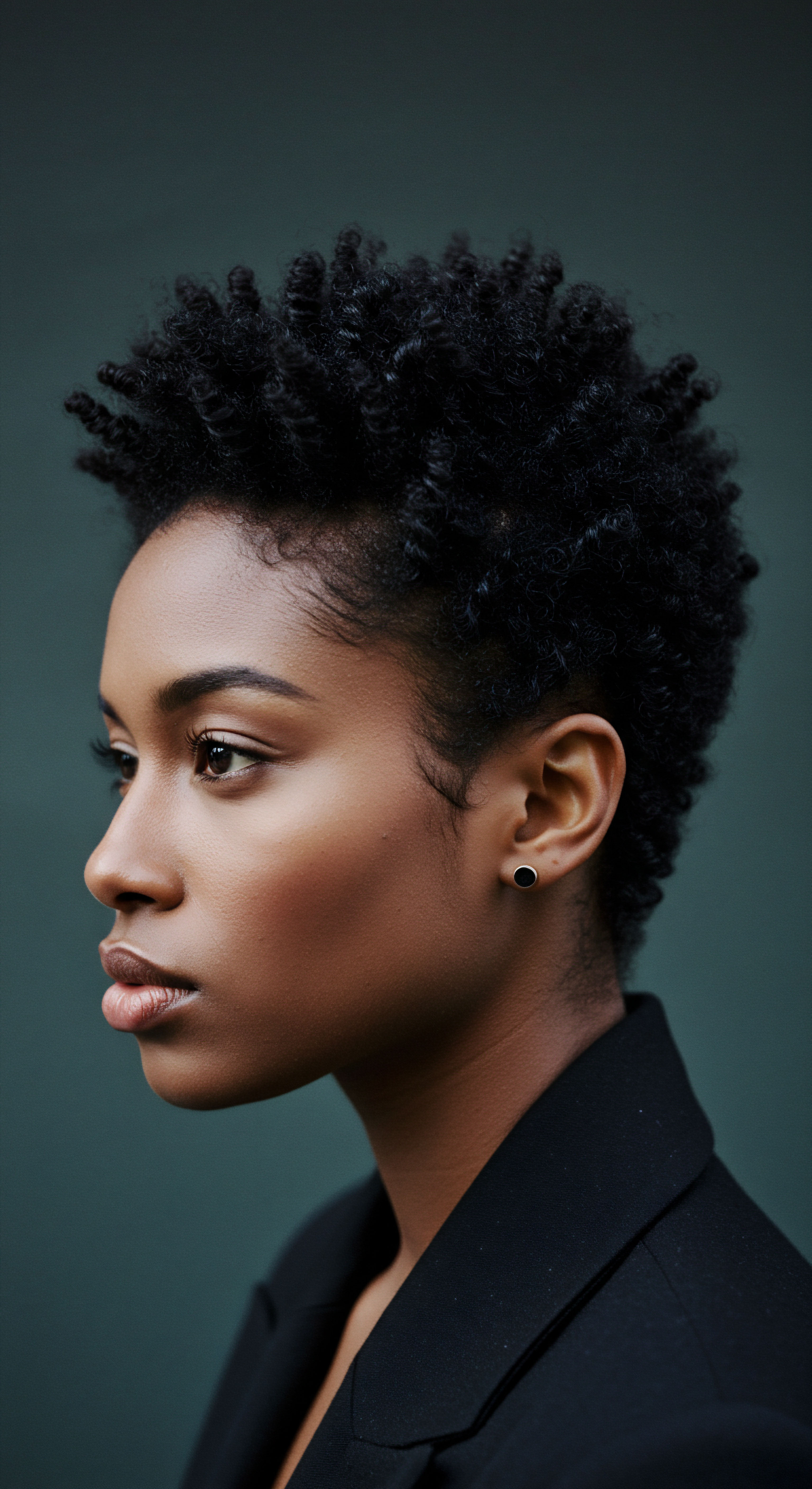
Ritual
As communities flourished, the simple act of applying a protective substance or covering the hair evolved into practices steeped in meaning and methodical application. The transition from basic utility to a considered ritual speaks to a deepening appreciation for hair as a vital aspect of identity, health, and cultural expression. This section explores how materials, once chosen for their raw properties, became central to deliberate, often sacred, regimens aimed at preserving hair’s inherent vitality. We move from the ‘what’ to the ‘how,’ observing the careful hands and discerning minds that shaped historical hair protection.
These practices were not merely functional; they were often intertwined with daily life, social standing, and spiritual beliefs. The consistent application of protective measures transformed simple materials into elements of a routine, a ritual that honored the hair and its place within the individual and the community.

Oiling and Greasing Practices
One of the most enduring and widespread historical practices for hair protection involved the generous application of oils and fats. Across continents, from ancient Egypt to the pre-colonial Americas and various African societies, Oiling Hair was a cornerstone of care. Olive oil was prized in the Mediterranean, while sesame oil held significance in parts of Asia. In many African cultures, shea butter, cocoa butter, and various plant-derived oils were regularly massaged into the scalp and strands.
- Scalp Health ❉ These fatty substances nourished the scalp, maintaining its suppleness and preventing dryness, which could lead to irritation and flaking.
- Strand Sealing ❉ They coated the hair shaft, acting as a natural sealant to lock in moisture and repel environmental aggressors like dust and harsh winds.
- Shine and Suppleness ❉ Regular oiling imparted a healthy sheen and improved the hair’s elasticity, making it less prone to breakage.
The meticulous nature of these oiling rituals suggests an understanding of hair’s delicate needs, long before the molecular structure of lipids was known. The rhythmic application, often performed by elders or family members, transformed a functional act into a bonding experience, reinforcing its place within the communal fabric.

Protective Styling and Head Coverings
The ingenuity of historical hair protection truly shines in the realm of protective styling and the sophisticated use of head coverings. These methods minimized manipulation, reducing friction and exposure to the elements.
In numerous African societies, complex braiding and coiling patterns were not only aesthetic marvels but practical solutions for hair preservation. Styles like Cornrows, intricate coils, and carefully arranged locs kept hair neatly tucked away, shielded from daily wear and tear. These styles could last for weeks, allowing hair to rest and retain moisture, minimizing breakage. The materials used to secure these styles were often natural fibers or even extensions made from human hair or plant fibers, adding to the protective effect.
Historical hair care transitioned from simple utility to a considered ritual, with practices like oiling and intricate protective styling becoming central to preserving hair vitality.
Head coverings evolved significantly, from simple cloths to elaborate constructions. In West Africa, the Gele and other headwraps were not merely fashion statements; they shielded delicate strands from the sun and dust, and their layered nature could offer insulation. Similarly, in various parts of the Middle East and Asia, turbans and veils provided comprehensive protection. The choice of material for these coverings was often deliberate:
- Cotton ❉ Breathable and absorbent, cotton wraps could prevent excessive sweating and provide a soft barrier.
- Linen ❉ Durable and cool, linen was suitable for warm climates, offering protection without overheating.
- Silk ❉ While more luxurious and later in widespread use, silk, known for its smooth surface, became highly prized for reducing friction and preserving hair moisture, especially at night.

The Nighttime Sanctuary
The concept of protecting hair during sleep, a practice so vital to modern textured hair care, has historical precedent. While specific historical records detailing widespread nighttime hair wrapping are less common than daytime practices, the understanding of hair vulnerability during rest likely existed. Individuals would have intuitively recognized the friction caused by tossing and turning against rough sleeping surfaces.
The use of soft cloths or specific head coverings at night would have served to:
- Reduce Friction ❉ Minimizing tangles and breakage from rubbing against bedding.
- Preserve Moisture ❉ Helping to keep oils and moisture within the hair, preventing evaporation.
- Maintain Styles ❉ Extending the life of intricate hairstyles, reducing the need for daily manipulation.
The transition from simple materials to deliberate rituals marks a profound shift in how humanity interacted with its hair. It underscores a growing awareness of hair’s inherent value, leading to the development of sophisticated practices that prioritized its longevity and health, using the resources available from the natural world.
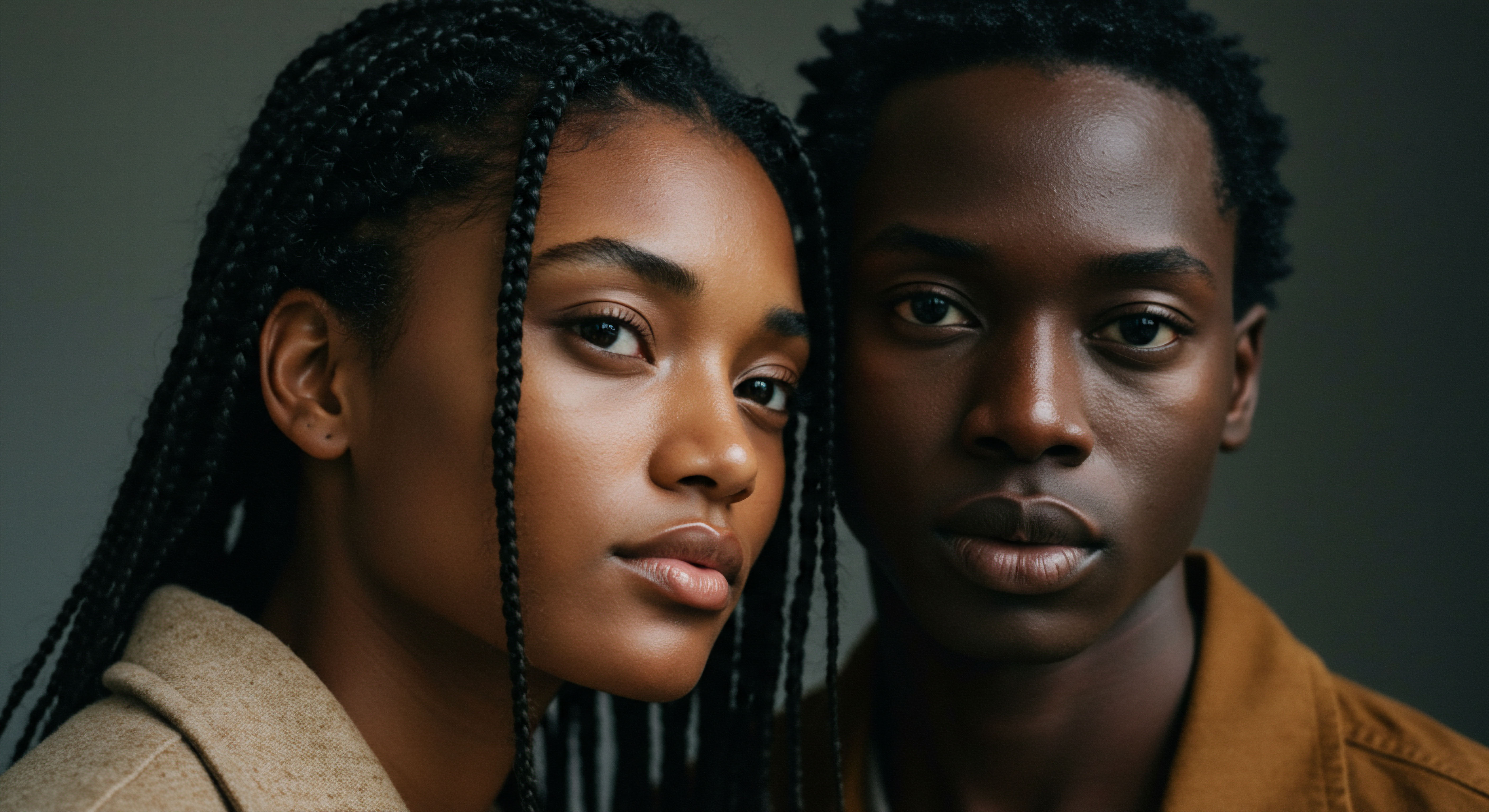
Relay
Stepping into the deeper currents of historical hair protection reveals a sophisticated interplay between material science, environmental adaptation, and cultural imperatives. This exploration moves beyond the mere description of substances and practices to a more profound understanding of their underlying rationale and long-term effects. We ask not only what was used, but why it persisted, how it functioned at a fundamental level, and what lessons these ancient methods hold for our contemporary approach to hair wellness. This section invites a consideration of the enduring wisdom embedded within traditional hair care, a wisdom often corroborated by modern scientific inquiry.
The efficacy of historical hair protection was not always a matter of conscious scientific understanding, yet it was remarkably effective. This effectiveness stemmed from an intuitive grasp of the hair fiber’s needs and the properties of available natural resources.

How Did Climate Influence Material Choices?
The geographical and climatic conditions of a region exerted immense influence over the materials chosen for hair protection. In arid desert environments, where sun exposure and dust were constant threats, heavier, occlusive materials were favored. Animal fats and rich plant butters, such as those from the shea tree, provided a thick barrier against dehydration and UV radiation.
The Himba people of Namibia, for instance, have long utilized Otjize, a mixture of butterfat and red ochre, as a daily application for their skin and hair. This compound is not merely cosmetic; it forms a physical shield against the harsh desert sun and dry winds, acting as a natural sunscreen and moisturizer.
A study published in the Journal of Photochemistry and Photobiology B ❉ Biology by P.W. Wanjau and colleagues (2018) examined the photoprotective properties of traditional African plant extracts, including those rich in polyphenols and flavonoids, which were historically used for skin and hair care. While not directly on ochre and butterfat, this research highlights the scientific basis for the UV-absorbing properties of natural compounds historically applied.
The deep cultural integration of such practices, as seen with otjize, demonstrates a long-term adaptation where the protective qualities of the material were intrinsically linked to survival and well-being in challenging climates. This long-standing cultural practice, refined over generations, provides a compelling example of effective, naturally derived protection, demonstrating a sophisticated understanding of environmental interaction, even without modern chemical analysis.
Conversely, in humid, tropical regions, materials that allowed for breathability and prevented fungal growth might have been prioritized. Lighter oils, plant extracts with antimicrobial properties, and loose-fitting natural fiber coverings would have been more suitable, allowing the scalp to breathe while still offering a degree of protection from humidity-induced frizz or environmental debris.

The Biomechanics of Ancient Hair Care
Beyond surface-level protection, some historical practices inadvertently supported the biomechanical integrity of hair. The consistent application of natural oils, rich in saturated and monounsaturated fatty acids, could penetrate the hair shaft, particularly for hair with higher porosity. This internal conditioning helped to maintain the hair’s elasticity and reduce its susceptibility to hygral fatigue – the swelling and shrinking of hair as it absorbs and releases water, which can lead to weakened protein bonds and breakage.
Consider the ancient practice of braiding or coiling hair. This not only prevented tangling but also reduced the physical stress on individual strands. By gathering hair into a compact, organized structure, it minimized exposure to external forces like snagging on clothing or abrasion from environmental elements.
The use of natural fibers like Cotton Wraps, especially at night, provided a smoother surface than rough bedding, reducing friction and preserving the hair’s cuticle layer. A smoother cuticle means less frizz and better moisture retention, principles that underpin modern hair science.
| Environmental Challenge Intense Sun Exposure |
| Historical Material/Practice Red ochre and butterfat (otjize), thick plant oils |
| Underlying Protective Mechanism Physical barrier, UV absorption, moisture seal |
| Environmental Challenge Dryness and Wind |
| Historical Material/Practice Animal fats, heavy plant butters, occlusive head coverings |
| Underlying Protective Mechanism Emollient barrier, moisture retention, physical shielding |
| Environmental Challenge Physical Abrasion |
| Historical Material/Practice Braids, coils, smooth fabric headwraps (e.g. early silk/cotton) |
| Underlying Protective Mechanism Reduced friction, minimized manipulation, structural containment |
| Environmental Challenge Dust and Debris |
| Historical Material/Practice Head coverings, clay applications, sticky resins (for binding) |
| Underlying Protective Mechanism Physical barrier, entrapment of particles |
| Environmental Challenge Adaptation to local conditions drove the selection and application of protective hair materials. |
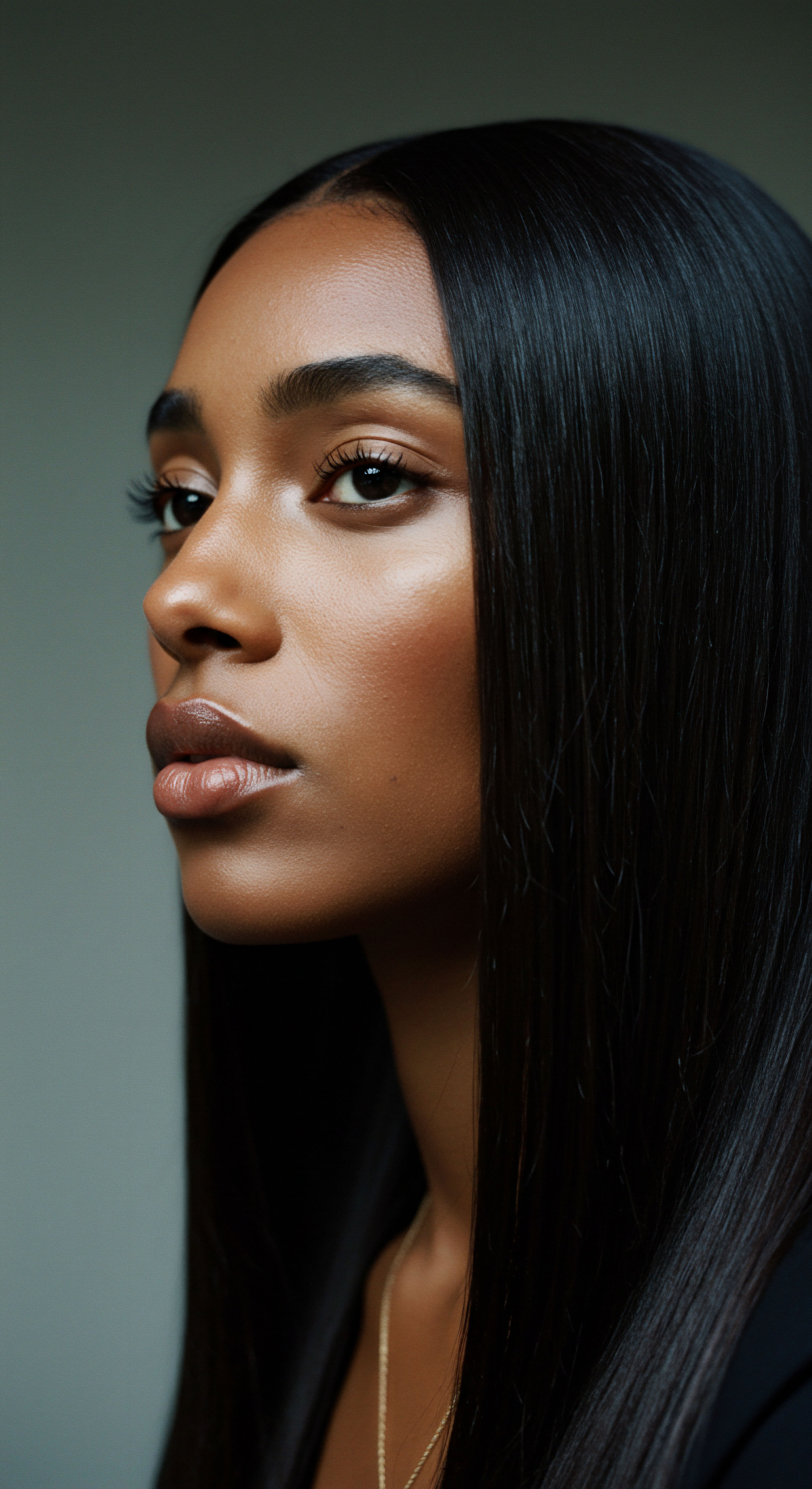
What Does Hair Adornment Reveal About Protection?
The line between hair adornment and hair protection was often beautifully blurred in historical contexts. Many intricate hairstyles, adorned with shells, beads, or precious metals, served a dual purpose. While clearly aesthetic, the very act of creating and maintaining these complex styles, often requiring significant time and specialized tools, implied a high degree of protection.
Hair was meticulously sectioned, coiled, braided, and then often reinforced with natural resins or clays to hold its shape. This structural integrity shielded the hair from environmental damage, preventing tangles and breakage, and minimizing daily manipulation.
Consider the elaborate coiffures of ancient Egyptian nobility, often augmented with extensions made from human hair or plant fibers and then heavily oiled and adorned. These styles, while signaling status, also served to keep the hair contained and protected from the desert environment. The materials used to construct and maintain these styles, from plant-based pomades to linen wrappings, contributed directly to the hair’s preservation.
The longevity of these historical practices, often spanning centuries and adapting across diverse cultures, speaks to an innate human understanding of hair’s delicate nature. This deep, practical wisdom, passed down through oral traditions and demonstrated through daily rituals, forms a compelling counterpoint to modern scientific understanding, reminding us that the principles of hair protection are as old as humanity itself. The ‘relay’ of this knowledge, from ancestor to descendant, continues to inform our present understanding of hair wellness.
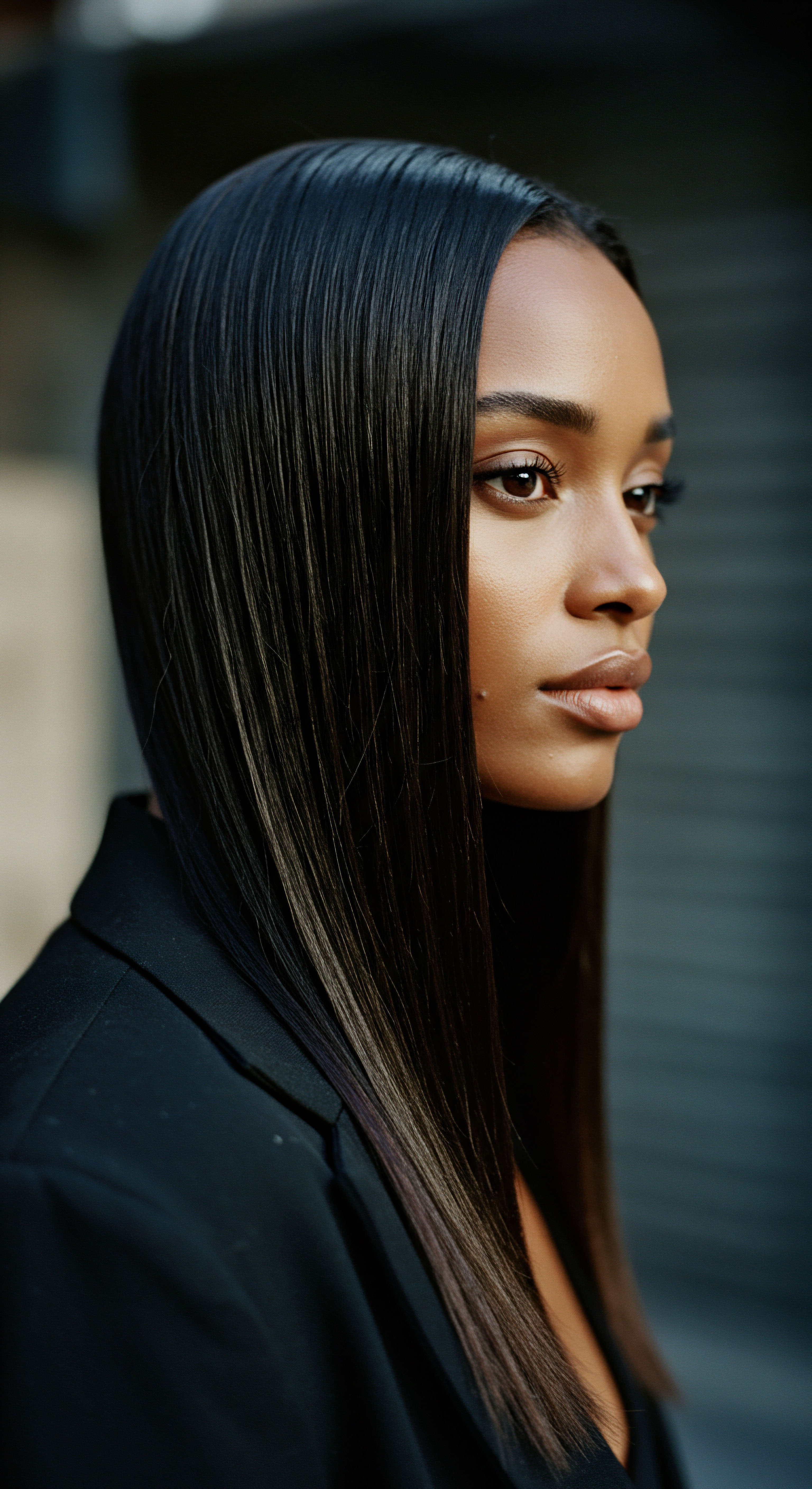
Reflection
The journey through historical hair protection materials reveals more than a mere catalog of substances; it unveils a quiet, enduring dialogue between humanity and its natural world. From the simple clay of the earth to the intricate artistry of a braided style shielded by a silken wrap, each material and practice speaks of adaptation, ingenuity, and a deep respect for the hair that graces our heads. It reminds us that the pursuit of healthy, resilient hair is not a modern invention, but a timeless endeavor, rooted in the wisdom of those who came before us. Their methods, born of necessity and observation, continue to offer whispers of guidance, inviting us to consider the enduring power of natural elements and the profound connection between our heritage and our hair.

References
- Wanjau, P. W. Kanyara, J. N. Mwaniki, J. N. & Karanja, P. N. (2018). Photoprotective Properties of Selected Traditional African Plant Extracts. Journal of Photochemistry and Photobiology B ❉ Biology, 180, 192-198.
- Fussell, S. (2014). The Hair Handbook ❉ A Practical Guide to Hair Care, Styling, and Health. London ❉ Thames & Hudson.
- Roach, M. (2010). Stiff ❉ The Curious Lives of Human Cadavers. New York ❉ W. W. Norton & Company. (For insights into preservation techniques and material interactions with organic matter).
- Byrd, A. D. & Tharps, L. D. (2014). Hair Story ❉ Untangling the Roots of Black Hair in America. New York ❉ St. Martin’s Press. (For cultural context of hair practices).
- Cavender, A. (2003). Folk Healing in America. Westport, CT ❉ Praeger. (For traditional remedies and material uses).
- De La Mettrie, J. O. (1748). Man a Machine. (For early philosophical perspectives on the body and its care).
- Goody, J. (1990). The Culture of Flowers. Cambridge ❉ Cambridge University Press. (For botanical uses and cultural significance).
- Rocher, R. (2000). The Anthropology of Hair. New York ❉ Berg Publishers. (For anthropological perspectives on hair and its care).
- Hunter, L. (2011). Hair ❉ A Cultural History of Hair Fashion and Adornment. New York ❉ Abbeville Press.